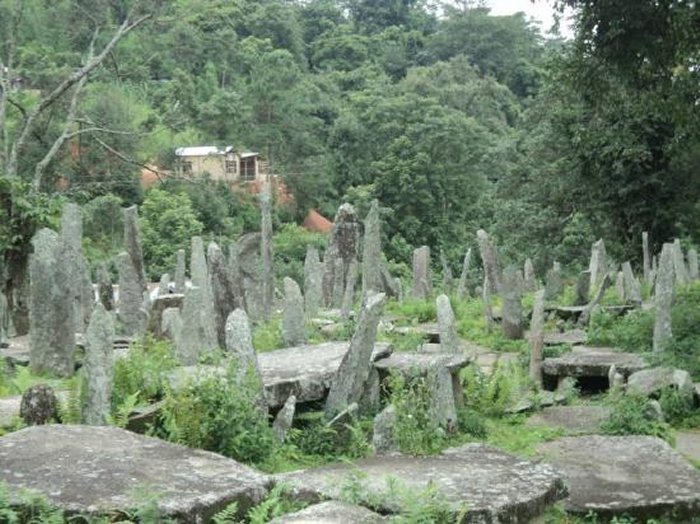Ancient Jaintia Kingdom And The Garden Of Monoliths And Dolmens
Ellen Lloyd - AncientPages.com - At first glance, these ancient stones appear to be scattered all over the place. They vary in size and shape and the entire site looks like an overgrown and messy garden, only here, we don’t find plants, trees or shrubs, but very old stones.
There is a symbolic meaning behind the monoliths in Nartiang, Jaintia Hills, in the state of Meghalaya in India.
They were deliberately erected to mark the reigns of the erstwhile Jaintia Kings, holding a significant event in the history of Meghalaya.
The entire complex consists of menhirs and dolmens that are distributed over an area of 100 meters in diameter. Some of the stones are meant to represent men and the other women.
Image credit: Archaeological Survey of India (ASI)
The tallest and biggest monolith is about eight meters in height, two meters in breadth and half a meter in thickness.
The Jaintia Kingdom in in present-day North-East India was annexed by the British East India Company in 1835.
Its capital, Jaintiapur is today nothing but ruins, but it was once a splendid ancient city located on the Jaintia Hills.
See also:
Bhimbetka: Gigantic Open Air Repository Of Prehistoric Art In India
Magnificent And Massive Great Wall Of India – Astonishing Ancient Structure Shrouded In Secrecy
The ancient kingdom of Jaintia is a mystery. It remains unknown how the kingdom got its name. One theory suggests the name is derived the shrine of Jayanti Devi or Jainteswari, an incarnation of the Hindu goddess Durga. According to another theory the name is derived via Synteng, the tribe of the rulers from Sutnuga, a former settlement.
Jaintia tribe - Image credit The Telegraph
Jaintia people, who are also known as Syntengs and Pnars have a rich cultural heritage. Their kingdom was the oldest one and it extended from the hills into the plains north of the Barak River.
Image credit: Trip Advisor
Today, the Jaintia tribe is famous for artistic weaving, wood-carving and cane and bamboo work. They also produce beautiful carpets of silk, musical instruments and jewelry.
Another fascinating and mysterious complex of standing stones – very similar to those of the famous Stonehenge – is located at Willong Khullen, a small village in Manipur, in the North- Eastern part of India. It’s often called India’s Stonehenge and it is ancient megalithic complex is not particularly well-known to the people from outside.
Written by Ellen Lloyd – AncientPages.com
Copyright © AncientPages.com All rights reserved. This material may not be published, broadcast, rewritten or redistributed in whole or part without the express written permission of AncientPages.com
More From Ancient Pages
-
 Cleveland’s Prehistoric Sea Monster Had A Mouth Twice As Large As A Great White Shark
Fossils | Mar 3, 2023
Cleveland’s Prehistoric Sea Monster Had A Mouth Twice As Large As A Great White Shark
Fossils | Mar 3, 2023 -
 On This Day In History: Cyrus The Great Enters Capital Of Babylon And Allows Jews Return To Their Land – On Oct 29, 539 BC
News | Oct 29, 2016
On This Day In History: Cyrus The Great Enters Capital Of Babylon And Allows Jews Return To Their Land – On Oct 29, 539 BC
News | Oct 29, 2016 -
 Antediluvian Time-Capsule Hidden In Forbidden Ancient Egyptian Crypts?
Featured Stories | May 7, 2018
Antediluvian Time-Capsule Hidden In Forbidden Ancient Egyptian Crypts?
Featured Stories | May 7, 2018 -
 Agni: Hindu God Of Divine Illumination And One Of The Three Supreme Deities Of Vedic Lore
Featured Stories | May 3, 2018
Agni: Hindu God Of Divine Illumination And One Of The Three Supreme Deities Of Vedic Lore
Featured Stories | May 3, 2018 -
 Ten Ancient Jugs May Reveal The Location Of The Biblical Tabernacle
Archaeology | Jul 21, 2017
Ten Ancient Jugs May Reveal The Location Of The Biblical Tabernacle
Archaeology | Jul 21, 2017 -
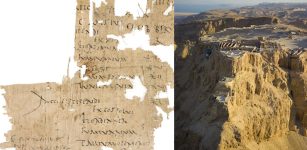 Rare Ancient Paycheck Of A Roman Legionary Soldier Found At Masada
Archaeology | Feb 16, 2023
Rare Ancient Paycheck Of A Roman Legionary Soldier Found At Masada
Archaeology | Feb 16, 2023 -
 The Iceni’s Queen Boudicca Who Revolted Against Roman Rule
Featured Stories | Apr 3, 2023
The Iceni’s Queen Boudicca Who Revolted Against Roman Rule
Featured Stories | Apr 3, 2023 -
 Early Humans In The Paleolithic Age Had A More Varied Diet Than Previously Assumed
Archaeology | Nov 29, 2023
Early Humans In The Paleolithic Age Had A More Varied Diet Than Previously Assumed
Archaeology | Nov 29, 2023 -
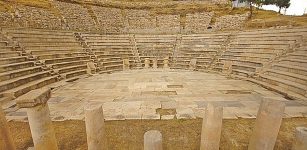 Cult Of Zeus Discovered In The Ancient City Of Metropolis
Archaeology | Dec 21, 2015
Cult Of Zeus Discovered In The Ancient City Of Metropolis
Archaeology | Dec 21, 2015 -
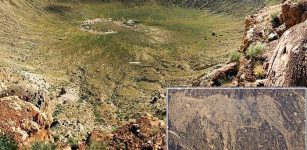 8,000-Year-Old Petroglyphs Discovered In Oldest Impact Crater In South Africa
Archaeology | Jun 21, 2019
8,000-Year-Old Petroglyphs Discovered In Oldest Impact Crater In South Africa
Archaeology | Jun 21, 2019 -
 Unique Heart-Shaped Jesuit Ring At Fort St. Joseph In Michigan
Archaeology | Sep 17, 2022
Unique Heart-Shaped Jesuit Ring At Fort St. Joseph In Michigan
Archaeology | Sep 17, 2022 -
 Ancient Mesopotamian City Discovered And Identified As Xarab-i Kilashin
Archaeology | Jul 11, 2017
Ancient Mesopotamian City Discovered And Identified As Xarab-i Kilashin
Archaeology | Jul 11, 2017 -
 Late Neolithic Italians Mastered Complex Metal Technologies – New Study
Archaeology | Jan 22, 2020
Late Neolithic Italians Mastered Complex Metal Technologies – New Study
Archaeology | Jan 22, 2020 -
 How Greenland Got The ‘Wrong’ Name Thanks To Viking Erik The Red
Ancient History Facts | Mar 21, 2017
How Greenland Got The ‘Wrong’ Name Thanks To Viking Erik The Red
Ancient History Facts | Mar 21, 2017 -
 Unique 4,000-Year-Old Board Game – Unearthed In Oman
Archaeology | Jan 18, 2022
Unique 4,000-Year-Old Board Game – Unearthed In Oman
Archaeology | Jan 18, 2022 -
 Remnants Of A Royal Rest House That Served As A Temporary Residence For Pharaoh Thutmose III
Archaeology | May 9, 2024
Remnants Of A Royal Rest House That Served As A Temporary Residence For Pharaoh Thutmose III
Archaeology | May 9, 2024 -
 Njord: Norse God Of The Seas And Seafarers And His Unhappy Marriage To Skadi
Featured Stories | Jul 10, 2018
Njord: Norse God Of The Seas And Seafarers And His Unhappy Marriage To Skadi
Featured Stories | Jul 10, 2018 -
 How Did Ancient Civilizations Make Sense Of The Cosmos And What Did They Get Right?
Civilizations | Mar 7, 2022
How Did Ancient Civilizations Make Sense Of The Cosmos And What Did They Get Right?
Civilizations | Mar 7, 2022 -
 Evidence Of Beer Drinking 9,000 Years Ago In Southern China Discovered
Archaeology | Sep 1, 2021
Evidence Of Beer Drinking 9,000 Years Ago In Southern China Discovered
Archaeology | Sep 1, 2021 -
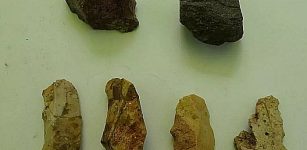 İnkaya Cave Study Brings To Light 86,000-Year-Old Traces Of Human Life
Archaeology | Aug 22, 2023
İnkaya Cave Study Brings To Light 86,000-Year-Old Traces Of Human Life
Archaeology | Aug 22, 2023




